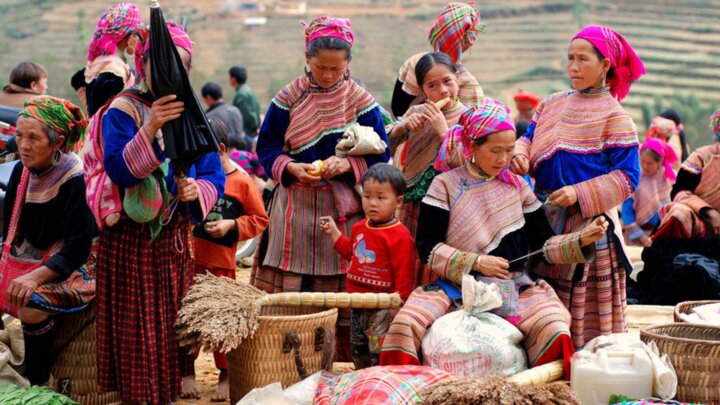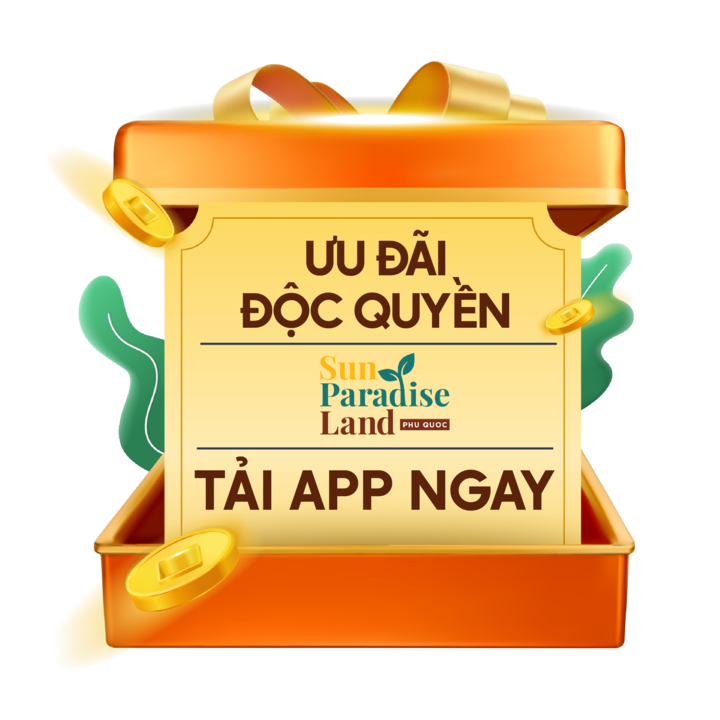1. Introduction to Coc Ly Market Fair: A Primitive Highland Market Fair in the Heart of Northwest Vietnam
About 60km northeast of the center of Lao Cai ward, Coc Ly market fair is not just a familiar place for buying and selling, exchanging goods, but is also considered a unique cultural exchange space of the ethnic minority people in the Northwest region.
According to the local Tay people, the name Coc Ly means “Plum Tree Root” in the local dialect, and has been associated with this market fair since the 19th century. Initially, the market was organized in Coc Sam village. It wasn't until the 1990s that the market was moved to its current location to facilitate trade and commerce between neighboring areas.
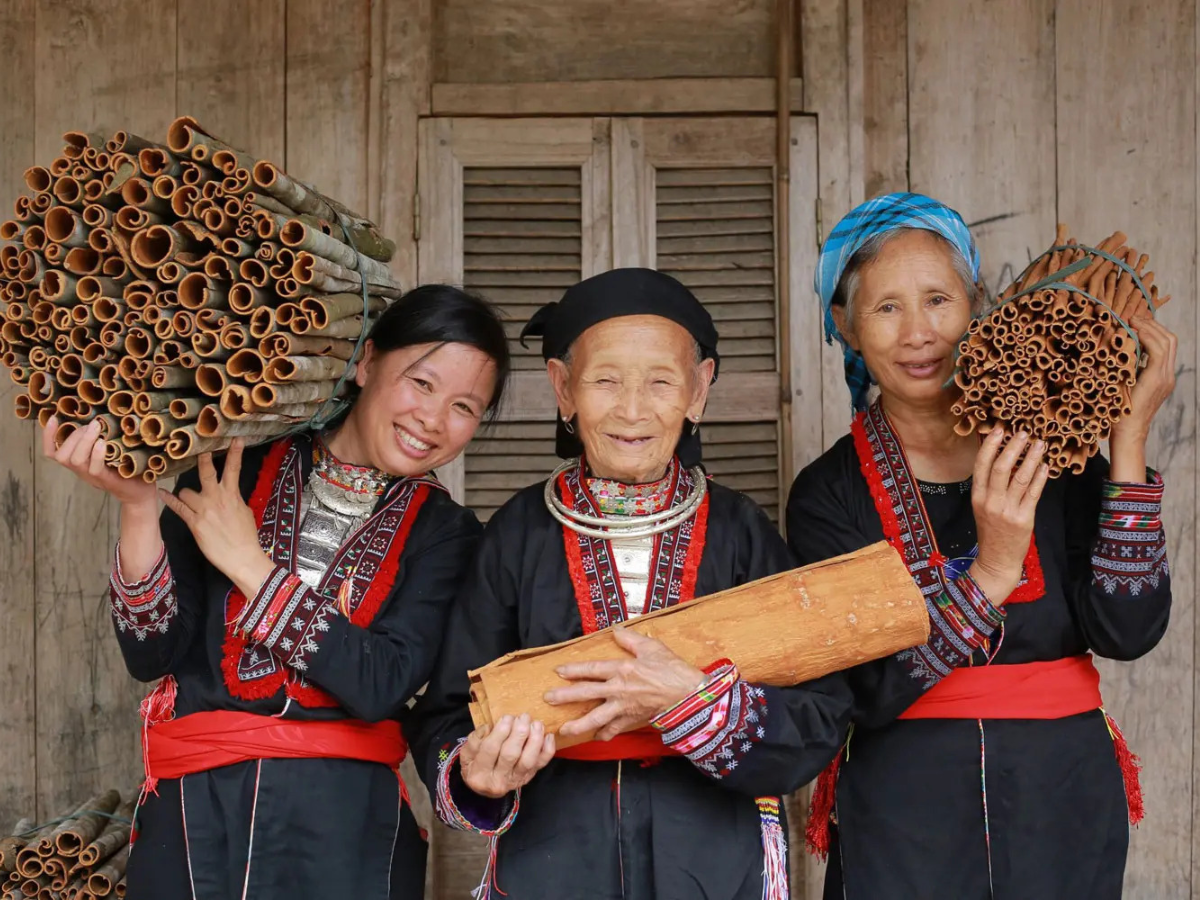
Bustling Coc Ly market session with unique highland culture. (Source: Collected)
The most attractive point of the Coc Ly market session is its rare pristine nature, less affected by commercialization like many other markets in the region. The market primarily serves the needs for exchanging essential goods and strengthening community ties among the H'Mong Hoa, Dao Den, Nung, Tay, and Phu La ethnic groups. Every Tuesday, people dress up in vibrant traditional costumes, gathering at the market not only to buy and sell but also to meet, visit, and make friends. Everything blends together, creating a vibrant picture imbued with the festive spirit of the mountainous region.
Visiting the Coc Ly market session, tourists can clearly feel how ethnic minorities maintain community connections through simple yet meaningful trading sessions. This is not simply a place to exchange highland products, but also a space that preserves and vividly reflects the life, spirit, and unique cultural traditions of the Northwest.
2. Time, route, and how to get to Coc Ly market session
2.1. Suitable time to visit Coc Ly market session
One of the most special features of the Coc Ly market session is that it only convenes every Tuesday. According to the experience of local connoisseurs, visitors should arrive at the market between 6 and 8 AM to witness firsthand the scene of people leading horses laden with goods down to the market – a rare and vivid spectacle.
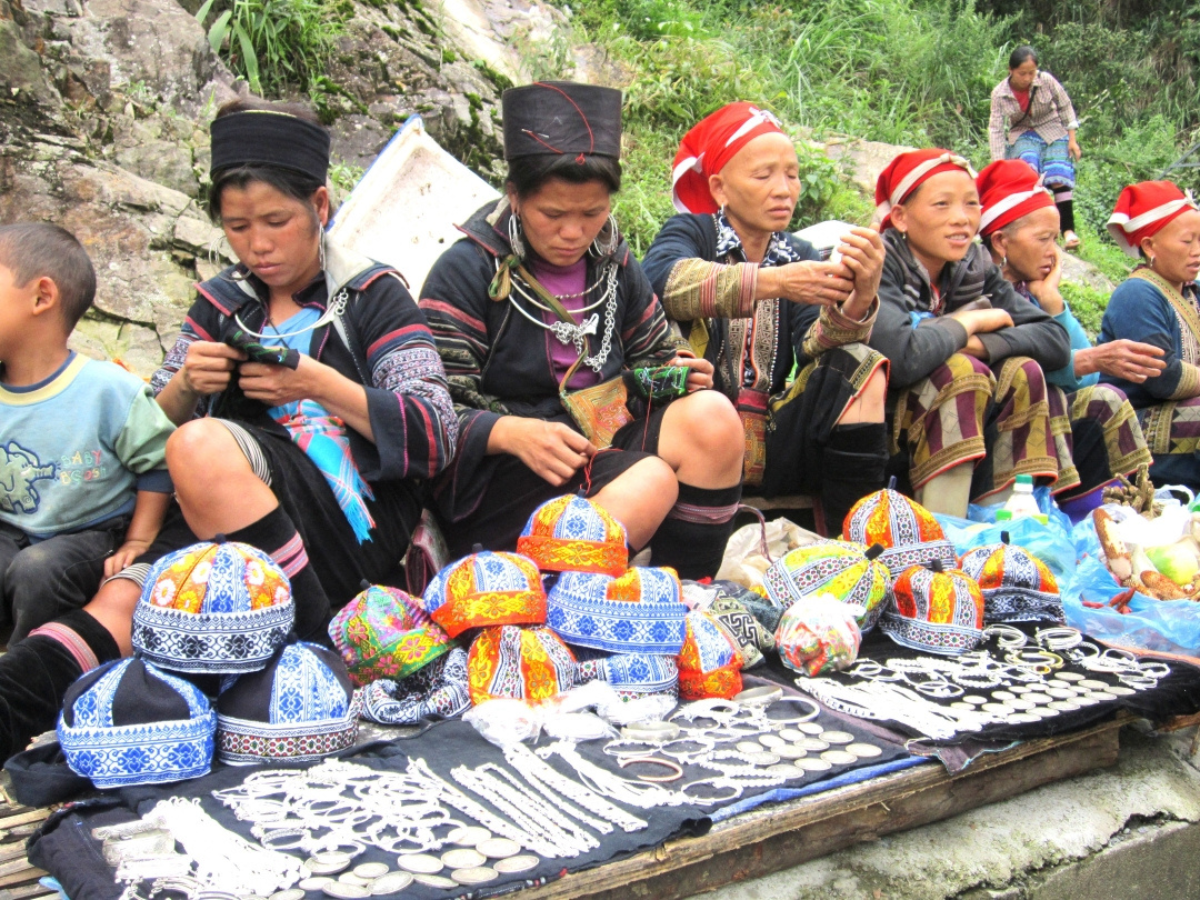
Visitors should come to the market early to experience the local life. (Source: Collected)
The period from September to October is considered the most ideal time to visit Coc Ly market fair. This is the season for harvesting shiitake mushrooms and wood ear mushrooms – fresh delicacies from the mountains. In addition, the cool, pleasant atmosphere, along with the vibrant, colorful natural scenery of the changing season, blends with the colorful traditional costumes of the ethnic people, creating a characteristic picture of the highlands.
Especially towards the end of the year, the market fair becomes even more bustling as people from many villages gather to celebrate Tet, exchange goods, and prepare for the new year. This is also when you can best feel the warm community spirit of the mountainous region.
2.2. How to get from Sa Pa and surrounding areas to Coc Ly market fair
To get to Coc Ly market fair, visitors usually have two main options: by road or a combination of road and boat trip along the Chay River. From the center of Bac Ha commune, the distance to the market is only about 12 km, which can be covered by motorbike or car in 30-45 minutes. However, the terrain is winding, with a cliff on one side, making it quite treacherous. Therefore, if you are unfamiliar with the roads or language, it is advisable to join a tour with a guide or have a local lead the way for convenience and safety.
For those starting from Sa Pa, the journey will be longer. Typically, tourists take a bus or tourist car to Bac Ha first, then continue to hire a car to Coc Ly, with a total travel time of about 2–3 hours. Another interesting option is to travel by boat from Bao Nhai upstream along the Chay River for about 10–20 km, then follow a trail to reach the market directly. This experience saves time and offers a special feeling as you admire the majestic mountain and river scenery along the riverbanks.
3. Unique features of Coc Ly market fair
3.1. Space, colors, and cultural significance of Coc Ly market fair
Stepping into Coc Ly market fair, you feel like you've entered a vibrant painting with myriad brilliant colors. People from ethnic groups such as Tay, Nung, H'Mong, Dao wear their characteristic traditional costumes, gather to chat, buy and sell, and exchange news in a relaxed and intimate atmosphere.
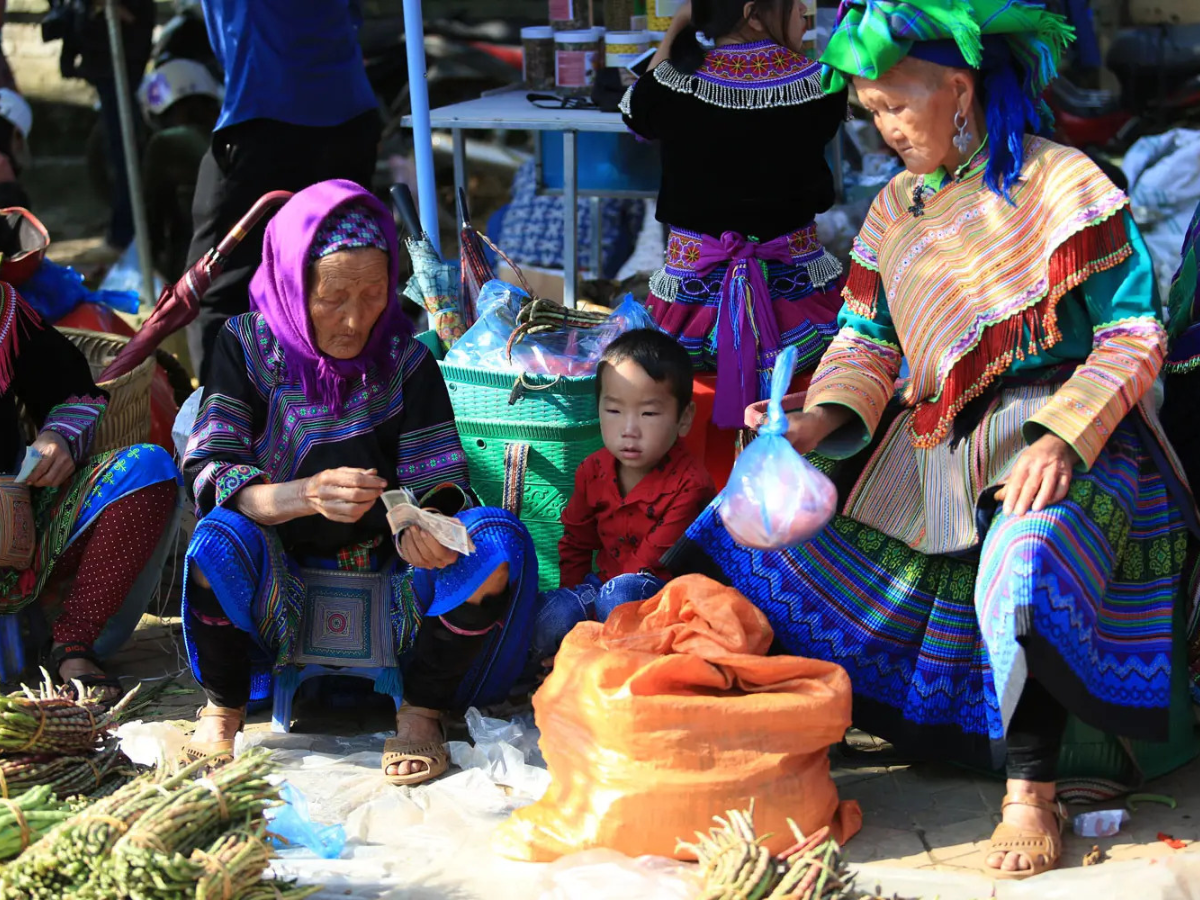
Coc Ly market day is a place for exchange and trade among many ethnic minorities. (Source: Collected)
What's special about Coc Ly market day is its simplicity, almost unchanged by strong commercialization and tourism like many other markets. The atmosphere here is quite peaceful and friendly, creating favorable conditions for tourists to easily connect and interact with locals. You will feel the harmony and solidarity among different ethnic communities.
Each stall, each area of the market carries its own story about the life, livelihood, and traditions of the highland people. This is not only a place for exchanging goods but also a space for preserving and transmitting the cultural values of ethnic identity.
3.2. Main areas of Coc Ly market day
The agricultural product area of Coc Ly market day is where local specialties such as corn, sweet potatoes, cassava, vegetables, fruits, chestnuts, wild honey, corn wine, and handmade cakes and pastries are gathered. The natural aroma of these products blends to create the unique flavor of the highlands.
The livestock and poultry area is always the most attractive place with transactions of buffaloes, cows, pigs, chickens, and ducks. The atmosphere here is quite lively as hundreds of buffaloes and cows are bought and sold amidst the laughter and negotiations of the people.

This is also the largest livestock trading place in Northwest Vietnam. (Source: Collected)
In the handicraft and jewelry area, you will find brocade dresses, bags, scarves, silver bracelets, bells, knives, scissors, and traditional craft products meticulously crafted by the local people themselves. Each product carries the unique cultural imprint of its ethnic group.
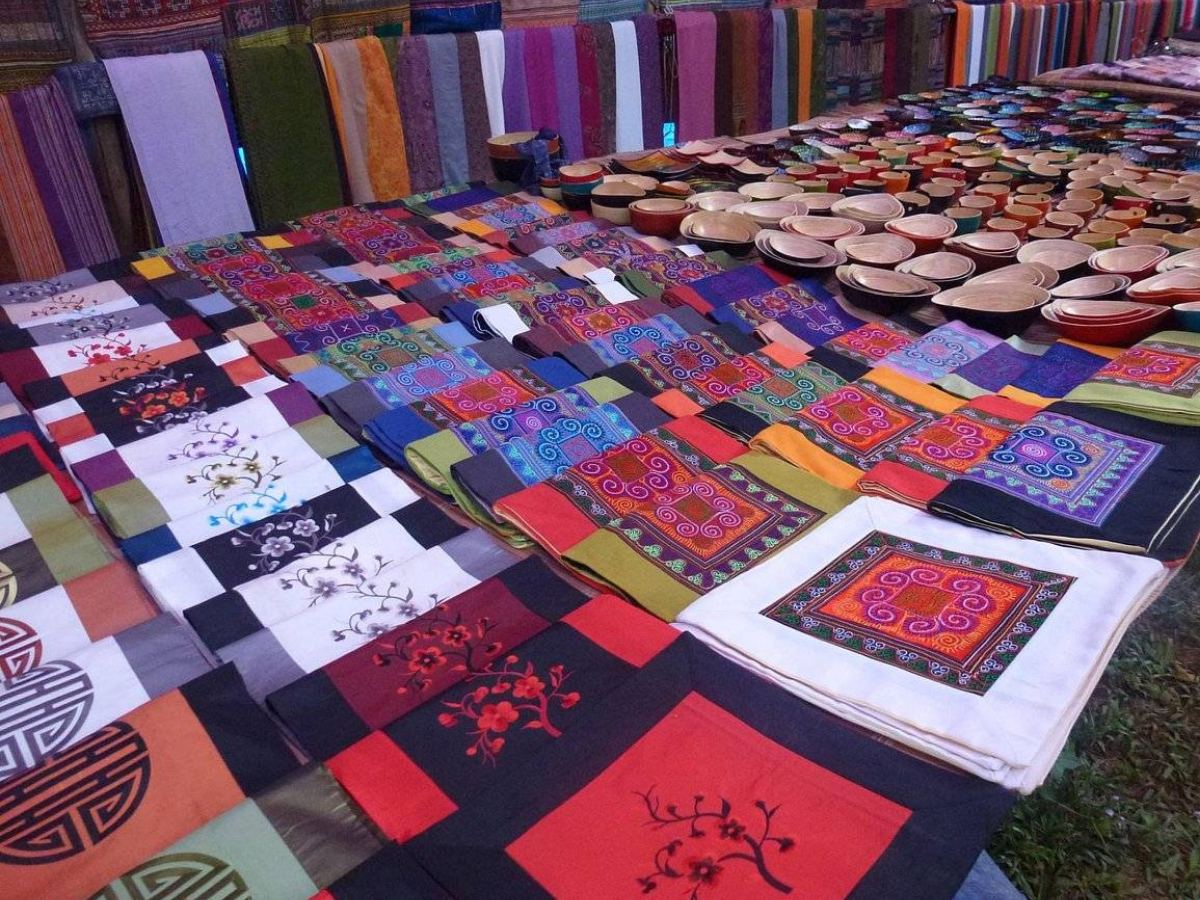
Products sold in the market are very diverse. (Source: Collected)
The food court of the Coc Ly market fair creates the liveliest atmosphere with constantly burning wood stoves, long tables and chairs where people gather to enjoy local dishes. Regardless of whether they are guests or hosts, everyone chats together in Coc Ly's unique friendly and cozy space.
3.3. Coc Ly Market Fair Cuisine: Thang Co, grilled local pork, and unforgettable specialties
Speaking of the Coc Ly market fair , you cannot miss the specialty dishes you must try, such as horse thang co, grilled local pork, corn cakes, and corn wine. Especially, the characteristic dipping sauce is cham cheo and Muong Khuong chili, which add to the rich, unforgettable flavor of the local cuisine.
Horse thang co at the Coc Ly market fair is prepared in the traditional way of ethnic people, with a sweet and clear broth from horse bones and meat, combined with aromatic herbs and special spices. This dish is not only delicious but also carries deep cultural significance within the ethnic communities of the highlands.
Grilled local pork is one of the indispensable specialties, with the characteristic delicious flavor of pigs raised freely in the high mountains. The pork is grilled over charcoal, served with wild vegetables and dipped in cham cheo, creating an unforgettable unique flavor.
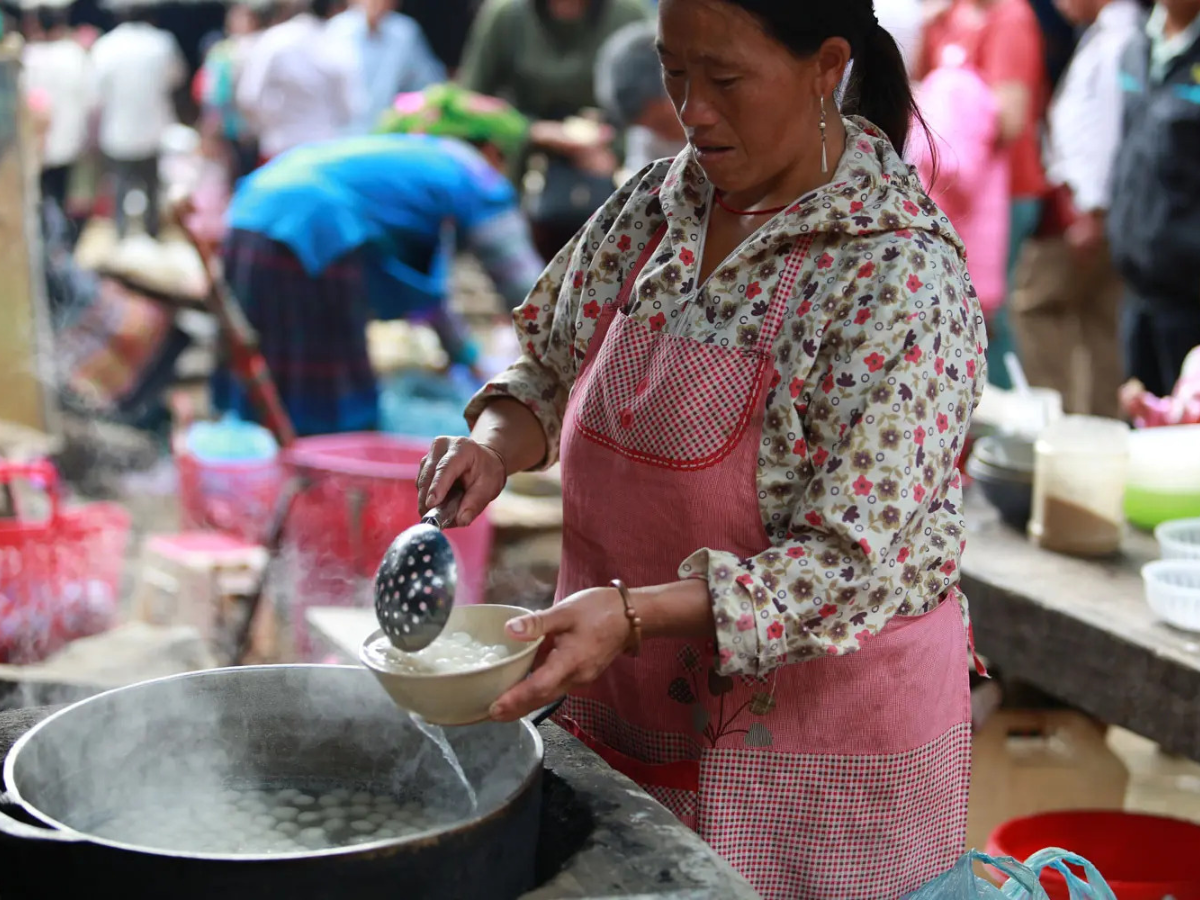
Coc Ly market offers an authentic and very interesting culinary experience. (Source: Collected)
Food stalls are concentrated in the center of the market, where you can easily ask for directions and sit down to eat with the locals. The culinary experience at Coc Ly market is considered the most authentic and interesting, giving you the feeling of being invited to eat by a highland family.
4. Coc Ly market compared to famous markets in Lao Cai
4.1. Differences of Coc Ly market compared to Bac Ha, Can Cau, Muong Hum…
Compared to Bac Ha market - the largest market in the region with diverse ethnic groups but has become very touristy, Coc Ly market is smaller, more pristine, and more authentic. If Bac Ha attracts tourists with its large scale and bustling atmosphere, then Coc Ly charms with its peaceful space and authentic local interaction.
Can Cau market is famous for specializing in buffalo trading and has a strong highland atmosphere, but on Saturdays, it often has more tourists. Meanwhile, Coc Ly market, with its Tuesday meeting schedule, is less known, creating a private and authentic space for those who want to experience local culture.
Muong Hum market also retains the identity of the Dao, Giay, and Hmong people and is less commercialized, but Coc Ly market has an advantage in its landscape with the poetic Chay River and a more accessible space for interaction.
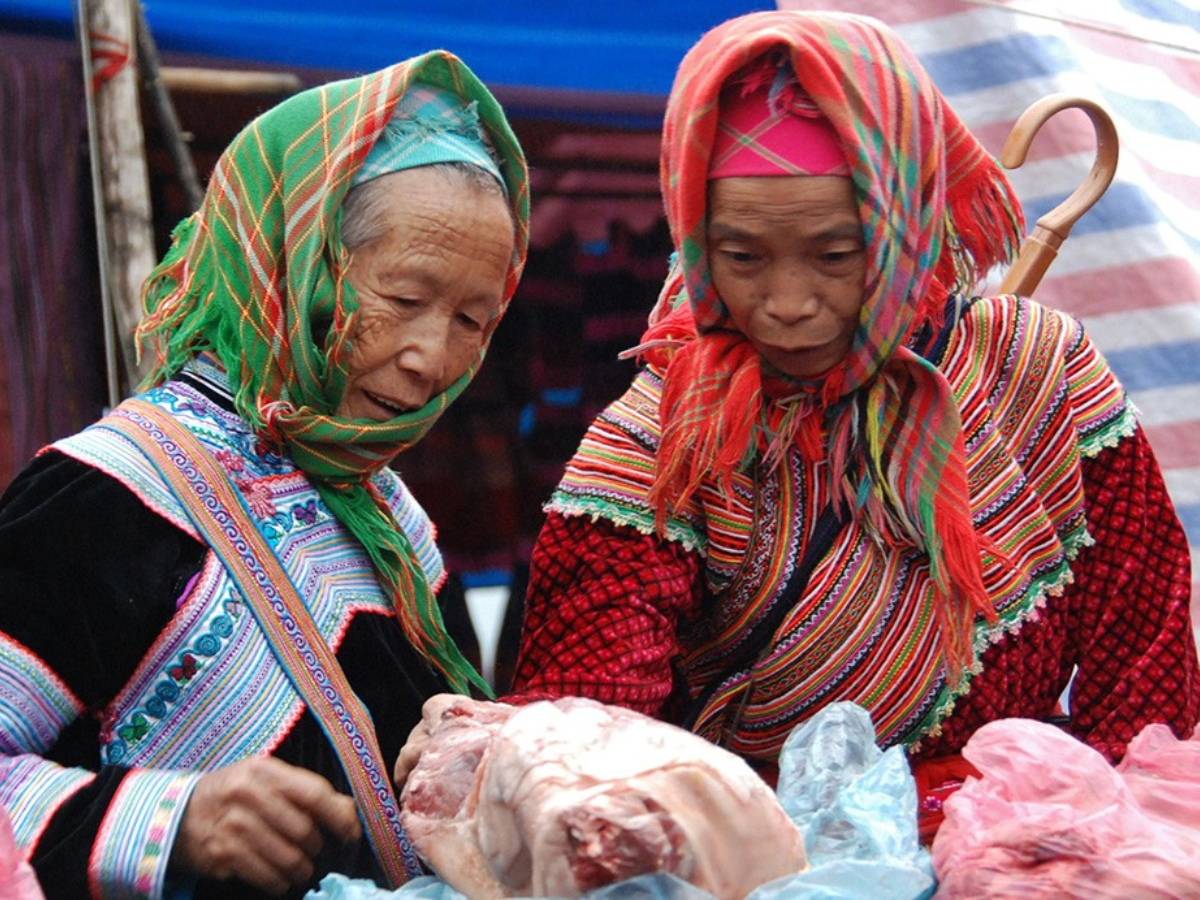
Coc Ly market day carries strong traditional, pristine characteristics. (Source: Collected)
The most distinct difference of the Coc Ly market day is its small scale, not yet heavily touristy, focusing on ethnic minority identity and maintaining traditional living customs. The poetic scenery and inviting atmosphere make this market an ideal choice for those seeking something different.
4.2. Choosing Coc Ly market day for an authentic experience – suitable for whom?
The Coc Ly market day is a perfect choice for travel bloggers wanting to explore less exploited market day corners with unique stories to tell. With its pristine and less commercialized space, this market provides authentic and engaging content for those in the tourism field.
Photographers will find countless beautiful photo opportunities at the Coc Ly market day with vibrant ethnic costumes, ideal natural lighting, and authentic interactions among ethnic communities. This is an ideal place to capture photos with high artistic and humanistic value.
Cultural researchers and those who love learning about local traditions will immerse themselves in a real community atmosphere. The Coc Ly market day offers opportunities to observe, record, and learn about how highland ethnic groups interact, trade goods, and maintain traditions.
Tourists who love peace and dislike overly commercialized spaces will find the Coc Ly market day suits their desire for the most authentic local cultural experience.
5. Some tips for visiting Coc Ly market day

Coc Ly market promises to bring the most authentic experiences of the Northwest highlands. (Source: Collected)
When preparing for a trip to Coc Ly market, bring a light jacket as early mornings in the highlands are often quite cold, even in summer. Drinking water, non-slip athletic shoes, a camera, and small denomination cash for purchases are essential items that cannot be missed.
Only pack light luggage, in case of sudden weather changes such as sudden rain showers or dense fog often encountered in high mountainous areas. Depart from Bac Ha between 5:30 – 6:00 AM to catch the busiest market session, and it is advisable to park your vehicle at the guarded parking lot near the market.
Due to the winding roads and susceptibility to motion sickness, you should prepare motion sickness medication. More importantly, if you are not accustomed to treacherous mountain roads, ask a local for guidance or join a tour to ensure safety on your journey to Coc Ly market.
When shopping at Coc Ly market, always ask for prices and consider bargaining gently, maintaining a respectful attitude towards the culture and customs of the ethnic people. The people here are very straightforward and sincere, so your politeness will be reciprocated with friendly smiles.
Regarding photography, the most important thing is to ask for permission before photographing people. Choose angles with natural light to highlight the vibrant colors of traditional costumes, lively livestock trading scenes, or cozy cooking areas. These authentic moments will create memorable photographs.
Don't hesitate to chat and interact with the local people. Learning a few simple greetings in the ethnic language will help you be warmly welcomed and have deeper experiences at Coc Ly market.
6. Suggested 3-Day 2-Night Itinerary
- Day 1: Hanoi – Sapa – Ham Rong Mountain
After the long journey from Hanoi, Sapa welcomes visitors with its cool air and characteristic mountain breeze. Check into the hotel and have lunch, the afternoon will be an ideal time to explore Ham Rong Mountain - the best spot for panoramic views of Sapa town. Stone-paved paths lead through the Indochinese Orchid Garden, the Sky Gate, and Cloud Yard, each stop offering a valuable photo opportunity. Amidst the ethereal space, the sound of Mong flutes and the dances of the Dao people make visitors feel like they've wandered into a fairy tale amidst the clouds.
As night falls, Sapa becomes vibrant under the yellow lights. Visitors can stroll around the Stone Church, explore the Sapa night market, or visit the love market area if it's Saturday night - where Mong boys and girls still court each other through the sounds of flutes and khen. Don't forget to enjoy hot grilled food, sip a glass of San Lung wine, and feel the warmth spread through the characteristic cold air of the highlands.
- Day 2: Conquer Fansipan – Explore Cat Cat Village
The second day marks the beginning of the journey to the "roof of Indochina." The Fansipan cable car system takes visitors across white cloud valleys to reach the sacred land of the Northwest mountains.
From the upper station, following a small stone path, visitors will pass Bich Van Zen Monastery - a pagoda located at an altitude of over 2,000m, hidden amidst clouds and sky, where the pagoda bell echoes amidst the mountain winds. Next is the 21.5m-tall Great Buddha Statue of Amitabha, majestic amidst the drifting clouds. The Arhat path with 18 solemn bronze statues leads to Kim Son Bao Thang Pagoda, bearing the ancient appearance of Vietnamese pagodas from the 15th-16th centuries. And finally, after climbing 600 bluestone steps, the 3,143m Fansipan peak opens up in a sea of white clouds - a place everyone wants to linger to admire, to capture the indescribable emotions of standing on the roof of Indochina.
In the afternoon, visitors can return to town to rest before continuing their exploration of Cat Cat Village - a picturesque H'Mong village nestled on the mountainside. Here, winding stone paths lead past Tien Sa Waterfall, an old hydroelectric power station, and charming small wooden houses. Visitors can watch ethnic cultural performances, buy some handicrafts, or simply sit by the stream, listening to the babbling water in the peaceful atmosphere.
Upon returning to town, a relaxing evening with a Dao red herbal bath is a popular choice. Amidst the warm steam and gentle herbal fragrance, the body feels completely relaxed after a long day of exploration.
- Day 3: Coc Ly Market – Return
On the last day, before leaving Sapa, visitors can visit Coc Ly market - where the highland culture is most vividly preserved. The market convenes by the gentle Chay River, surrounded by rolling mountains and forests, creating a misty, picturesque scene like a watercolor painting.
From early morning, Tay, Nung, Dao, and Mong people in vibrant traditional costumes flock to the market. Each area has its own character: the livestock trading area bustling with calls, the handicraft area filled with colors, the food area steaming with the aroma of Thang Co, Men Men, and fragrant Bac Ha corn wine. Here, visitors can wander through the market, chat with the locals, buy a few small souvenirs, or simply enjoy a bowl of highland Pho, watching the crowds pass by to feel the unique rhythm of life in the mountainous region.
Coc Ly market promises to bring the most authentic and profound cultural experiences of the Northwest highlands. Schedule your trip for Tuesday to discover this pristine beauty and create unforgettable memories!

